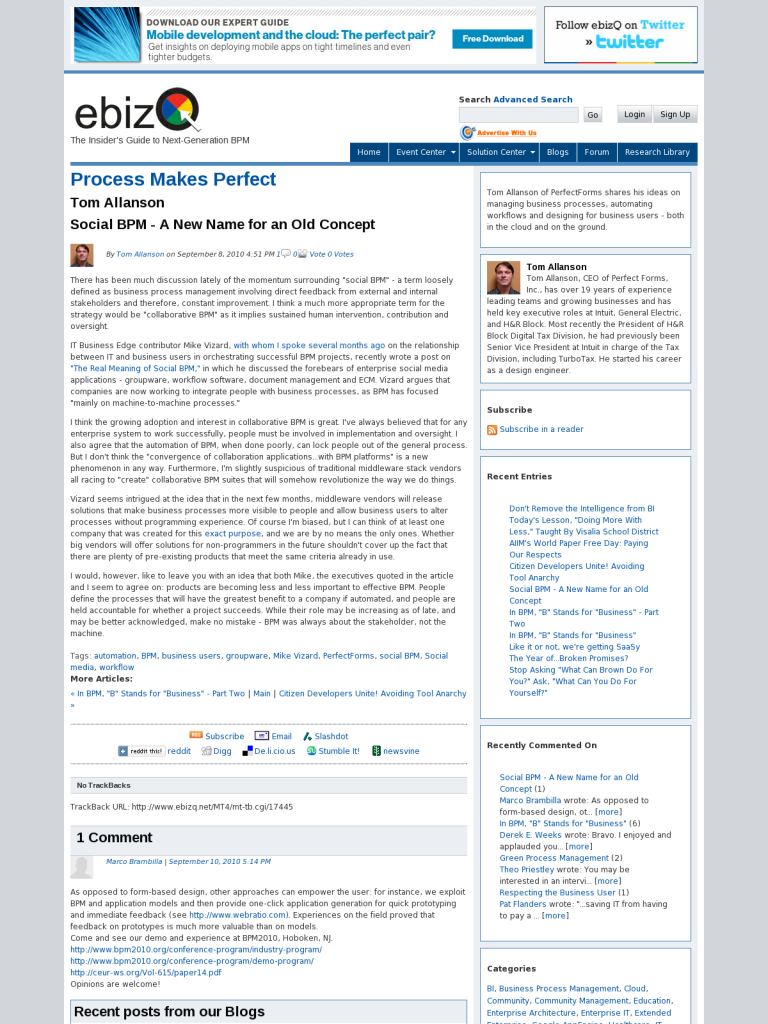Social BPM – A New Name for an Old Concept
There has been much discussion lately of the momentum surrounding “social BPM” – a term loosely defined as business process management involving direct feedback from external and internal stakeholders and therefore, constant improvement. I think a much more appropriate term for the strategy would be “collaborative BPM” as it implies sustained human intervention, contribution and oversight.
IT Business Edge contributor Mike Vizard, with whom I spoke several months ago on the relationship between IT and business users in orchestrating successful BPM projects, recently wrote a post on “The Real Meaning of Social BPM,” in which he discussed the forebears of enterprise social media applications – groupware, workflow software, document management and ECM. Vizard argues that companies are now working to integrate people with business processes, as BPM has focused “mainly on machine-to-machine processes.”
I think the growing adoption and interest in collaborative BPM is great. I’ve always believed that for any enterprise system to work successfully, people must be involved in implementation and oversight. I also agree that the automation of BPM, when done poorly, can lock people out of the general process. But I don’t think the “convergence of collaboration applications…with BPM platforms” is a new phenomenon in any way. Furthermore, I’m slightly suspicious of traditional middleware stack vendors all racing to “create” collaborative BPM suites that will somehow revolutionize the way we do things.
Vizard seems intrigued at the idea that in the next few months, middleware vendors will release solutions that make business processes more visible to people and allow business users to alter processes without programming experience. Of course I’m biased, but I can think of at least one company that was created for this exact purpose, and we are by no means the only ones. Whether big vendors will offer solutions for non-programmers in the future shouldn’t cover up the fact that there are plenty of pre-existing products that meet the same criteria already in use.
I would, however, like to leave you with an idea that both Mike, the executives quoted in the article and I seem to agree on: products are becoming less and less important to effective BPM. People define the processes that will have the greatest benefit to a company if automated, and people are held accountable for whether a project succeeds. While their role may be increasing as of late, and may be better acknowledged, make no mistake – BPM was always about the stakeholder, not the machine.
Leave a Comment
You must be logged in to post a comment.








